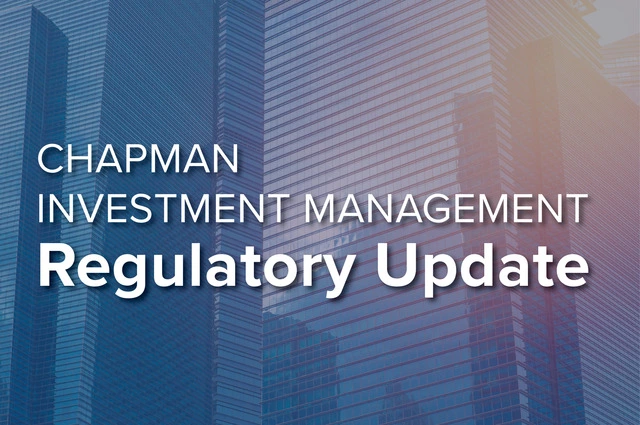- Topic: Capital & Liquidity Standards
37 matches.
In its 2024 Supervisory Priorities, the NCUA set out examination priorities based on activities that pose the highest risk to federally insured credit union members (referred to as “credit unions”) and that are responsive to the continuous stream of challenges facing credit unions in this current market. It should come as no surprise to anyone that liquidity risk is once again an examination priority for 2024, as the economic environment continues to be uncertain. This all follows on the heels of the Addendum to the Interagency Policy Statement on Funding and Liquidity Risk Management: Importance of Contingency Funding Plans issued in July 2023 (the “Addendum”), highlighting the importance of contingency funding plans as a crucial component of managing funding and liquidity risk.
Our December 6, 2023 Client Alert described very generally important aspects of the “Basel III Endgame” NPR (NPR) that proposed replacing two “subparts” of the existing US Basel III rule. In that Alert, we indicated we would issue a separate Client Alert describing in more detail how the Standardized Approach “risk weights” in Section 32 and “credit conversion factors” (CCFs) in Section 33 of the US Basel III rule differ from the risk weights and CCFs proposed in the NPR (which would be contained in proposed Sections 111 and 112 of the US Basel III rule).
On July 27, 2023, the three federal banking agencies jointly issued a “notice of proposed rulemaking” captioned “Regulatory Capital Rule: Large Banking Organizations and Banking Organizations With Significant Trading Activity” (NPR) that is more commonly described as “the Basel III endgame.”
Investor interest in rated-debt feeder funds has grown since we first issued our Action Item concerning such funds in March 2019. We expect this interest to continue as the private credit market expands through the COVID-19 crisis.
On May 5, federal banking regulators adopted an interim final rule that neutralizes the liquidity coverage ratio impact for banks participating in the Federal Reserve’s Money Market Mutual Fund Liquidity Facility and the Paycheck Protection Program Liquidity Facility.
Earlier today the Federal Reserve announced it would establish six new funding facilities supported by Treasury funding authorized by Section 4003(b)(4) of the CARES Act.
The Federal Reserve has established a webpage that provides links to a FAQ and other documents for the Money Market Fund Liquidity Facility described in earlier Chapman client alerts.
Yesterday the Federal Reserve announced it was temporarily removing Treasury securities and deposits at Federal Reserve Banks from the supplementary leverage ratio applicable to Category I-III bank holding companies or US intermediate holding companies of foreign banks.
On March 23, the Federal Reserve announced the establishment of the Term Asset-Backed Securities Loan Facility to support the flow of credit to consumers and businesses.
On March 23, the Federal Reserve issued further amendments to add negotiable certificates of deposit and all short-term municipal securities to the list of eligible collateral.
On March 23, the Federal Reserve added municipal issuers and amended the pricing for the commercial paper funding facility announced on March 17 and issued other “program terms and conditions” posted on the website of the Federal Reserve Bank of New York.
This morning, the Board of Governors of the Federal Reserve System announced sweeping actions to help the economy.
On March 18, the Federal Reserve announced a Money Market Fund Liquidity Facility to make loans to banks and certain affiliates secured by certain assets acquired from “prime” money market funds. Earlier today, the Federal Reserve issued amendments to the program.
On March 17, the Federal Reserve Board announced the establishment of two emergency funding facilities that closely mirror facilities established in 2008 during the last financial crisis in providing liquidity to both short and long term funding markets.
- The Banking Law Journal
This article outlines the features of proposals to adjust the applicability of certain capital and liquidity tests and certain enhanced prudential standards for bank holding companies.
On August 22, the three federal banking agencies issued an interim final rule implementing the May 2018 banking law’s requirement that investment grade, liquid and readily marketable municipal obligations be treated as Level 2B “high quality liquid assets” under the liquidity coverage ratio rule.
On June 14, the Board of Governors of the Federal Reserve System issued a final rule that establishes credit limits for single counterparties of US bank holding companies and foreign banking organizations with $250 billion or more in assets, and US intermediate holding companies of covered FBOs with $50 billion or more of consolidated assets.
On May 22, the House passed Senate bill S. 2155, which would amend certain Dodd-Frank provisions and, primarily for smaller banks and credit unions, provide additional regulatory relief. President Trump is expected to sign the bill, so that it will take effect as law.
On May 14, the Basel Committee on Banking Supervision issued two documents entitled “Criteria for Identifying Simple, Transparent and Comparable Short-Term Securitisations” and “Capital Treatment for Simple, Transparent and Comparable Short-Term Securitisations.”
- May 14, 2018
Today, the Basel Committee on Banking Supervision issued two documents entitled “Criteria for Identifying Simple, Transparent and Comparable Short-Term Securitisations” and “Capital Treatment for Simple, Transparent and Comparable Short-Term Securitisations.”
- October 2017 (Originally Published July 27, 2017)Pratt's Journal of Bankruptcy Law
On July 6, 2017, the Basel Committee on Banking Supervision issued two consultative documents entitled “Criteria for Identifying Simple, Transparent and Comparable Short-Term Securitisations” and “Capital Treatment for Simple, Transparent and Comparable Short-Term Securitisations.”
- August 2017
Keeping track of the regulatory developments affecting asset-backed commercial paper (“ABCP”) conduits and their sponsors is a daunting task. This updated desk reference reviews regulatory and legislative developments affecting the ABCP market.
On June 12, the Department of Treasury issued the first report in a series regarding regulation of the financial system. The report recommends that high-grade municipal bonds be categorized as Level 2B liquid assets instead of generally being excluded as HQLA currently.
On June 12, the Department of Treasury issued the first report in a series regarding regulation of the financial system in a manner consistent with Core Principles set forth in Executive Order 13772 signed by President Trump on February 3, 2017.
On April 19, the House Financial Services Committee posted a “discussion draft” of a revised version of the CHOICE Act. The discussion draft contains most of the provisions in last year’s bill with a number of important changes.
- February/March 2017Pratt's Journal of Bankruptcy Law
With Republicans retaining control of both chambers of Congress and Donald Trump elected President, the prospects for financial regulatory reform have changed. Many observers point to the Financial CHOICE Act as the best indication of Republican Congressional aspirations for such reform.
The Securities and Exchange Commission voted last Thursday to adopt changes to enhance liquidity risk management by open-end funds, including mutual funds and exchange-traded funds.
- Spring/Summer 2016 (Originally Published April 7, 2016)Real Estate Finance Journal
The Board of Governors of the Federal Reserve adopted a final rule to include certain U.S. municipal securities as high-quality liquid assets for purposes of the liquidity coverage ratio rule to which large banks are subject.
The Board of Governors of the Federal Reserve System issued a Notice of Proposed Rulemaking re-proposing a rule that would establish credit limits for single counterparties ofU.S. bank holding companies, foreign banking organizations, and U.S. intermediate holding companies of an FBO.
- Client Alert
On March 4, 2016 the Board of Governors of the Federal Reserve System issued a Notice of Proposed Rulemaking re-proposing a rule that would establish credit limits for single counterparties ofU.S. bank holding companies, foreign banking organizations, and U.S. intermediate holding companies of an FBO, with $50 billion or more of consolidated assets.
- Client Alert
To kick off the Memorial Day weekend, the Federal Reserve Board announced a proposal to include certain state and municipal general obligation bonds in the calculation of High Quality Liquid Assets, the numerator of the new Liquidity Coverage Ratio requirement to which large banks are subject.
In September 2014, the U.S. banking agencies adopted final rules implementing a liquidity coverage ratio requirement that will test a bank's ability to withstand "liquidity stress periods." In collaboration with the Structured Finance Industry Group (SFIG), Chapman attorneys authored a guide summarizing elements of the final rule that have the greatest impact on the securitization market.
On September 3, 2014, the US banking agencies adopted final rules implementing a liquidity coverage ratio (LCR) requirement that will test a bank's ability to withstand liquidity stress periods. The specific objective of the LCR rules is to ensure that a bank has enough high quality liquid assets (referred to as HQLA) that can be immediately converted into cash to meet its liquidity needs for a 30-day stress period.
- Client Alert
On October 24, 2013, the Board of Governors of the Federal Reserve Board released a proposed rule that introduces a liquidity coverage ratio requirement that will test a bank's ability to withstand "liquidity stress periods."
- Client Alert
The US banking regulators have issued final Basel III-related capital rules.
- Client Alert
On January 7, 2013, the Basel Committee on Banking Supervision (Committee) issued major revisions to the “liquidity coverage ratio” (LCR) it published in 2010.









